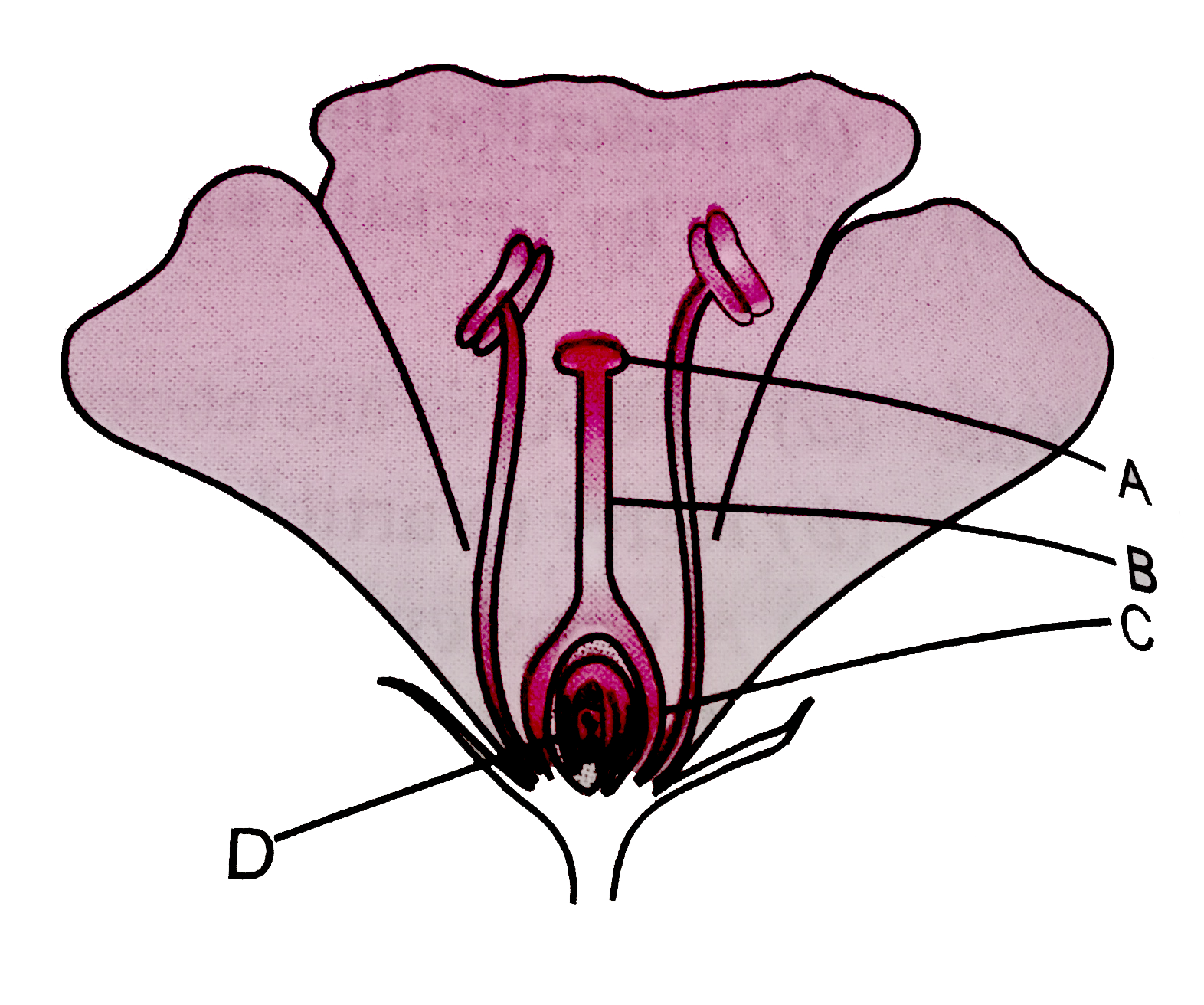Define the following terms :
(a) Aestivation (b) Placentation (c) Actinomorphie (d) Zygomorphic (e) Superior ovary (f) Perigynous flower (g) Epipetalous
(a) Aestivation : The mode of arrangement of sepals or petals in floral bud with respect to the other members of the same whorl is known as aestivation.
(b) Placentation : The arrangement of ovules in ovary is known as placentation.
(c) Actinomorphic : Actinomorphic flowers can be divided into two radial halves by any radial plane passing through its centre.
(d) Zygomorphic : Zygomorphic flowers are those flowers which can be divided into two similar halves by a single vertical plane, e.g. pea and beans.
(e) Superior ovary : Superior ovary flowers are those flowers in which thalamus becomes cone shaped and ovary is arranged at the top. Such ovary is called superior ovary and the flower is called Hypogynus e.g. Dhatura, China rose.
( f ) Perigynous flower : If gynoecium is situated in the centre and other parts of a flower are located on the rim of thalamus almost at the same level, it is called perigynous. Such ovary is said to be half interior e.g. plum, rosc, peach.
(g) Epipetalous stamen : When stamen are associated with petals it is called epiperalous ein. Dhaturo.
Topper's Solved these Questions
- MORPHOLOGY OF FLOWERING PLANTSBOOK - KUMAR PRAKASHANCHAPTER - MORPHOLOGY OF FLOWERING PLANTSEXERCISE - Section-E (solution o f NCERT Exempler)
10 Videos
- MORPHOLOGY OF FLOWERING PLANTSBOOK - KUMAR PRAKASHANCHAPTER - MORPHOLOGY OF FLOWERING PLANTSEXERCISE - Section-E-(Very Short Answer Type Questions)
9 Videos
- MORPHOLOGY OF FLOWERING PLANTSBOOK - KUMAR PRAKASHANCHAPTER - MORPHOLOGY OF FLOWERING PLANTSEXERCISE - Section-C (Importance )
4 Videos
- MINERAL NUTRITIONBOOK - KUMAR PRAKASHANCHAPTER - MINERAL NUTRITIONEXERCISE - QUESTIONS FOR MODULE (IMPORTANT MCQ FOR NEET)
4 Videos
- NEURAL CONTROL AND COORDINATIONBOOK - KUMAR PRAKASHANCHAPTER - NEURAL CONTROL AND COORDINATIONEXERCISE - OBJECTIVE SECTION (FILL IN THE BLANKS)
12 Videos
Similar Questions
Define the following terms:
(a) Aestivation
(b) Placentation
(c) Actinomorphic
(d) Zygomorphic
(e) Superior ovary
(f) Perigynous flower
(g) Epipetalous Stamen
View SolutionDefine the following terms:
(a) Aestivation
(b) Placentation
(c) Actinomorphic
(d) Zygomorphic
(e) Superior ovary
(f) Perigynous flower
(g) Epipetalous Stamen
View SolutionDefine the following terms
superior ovary
View SolutionDefine the following terms
perigynous flower
View SolutionDefine the following terms:
(a) Parasitism (b) Aestivation (w.r.t to animals not plants) (c) Amensalism.
View SolutionWrite the symbols for the following floral characters -
(a) Calyx
(b) Actinomorphic flower
(c) Bracteate
( d) Inferior ovary
( e) bisexual flower
View SolutionObserve the figure carefully and give the answer of the following questions :
(a) Write whether ovary is superior of inferior ?
(b) What is the type of flower- hypogynous, perigynous or epigynous ?
(c ) What type of ovule is shown in figure ?
(d) What changes occur in C after fertilization ?
(e ) What does A,B,C,D represent in the figure.

View Solution(a)Differentiate between :-Actinomorphic flower and Zygomorphic flower
(b) Differentiate between :-Apocarpous ovary and Syncarpous ovary
(c) Differentiate between :-Racemose inflorescence and Cymose inflorescence
View SolutionWhat is the fate of the following organs of a flower after fertilization? (a) Sepals (b) Petals (c) Stamens (d) Ovary (e) Ovule
View SolutionWhat is the fate of the following organs of a flower after fertilization?
(a) Sepals (b) Petals
(c) Stamens (d) Ovary
(e) Ovule
View Solution
